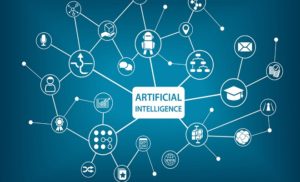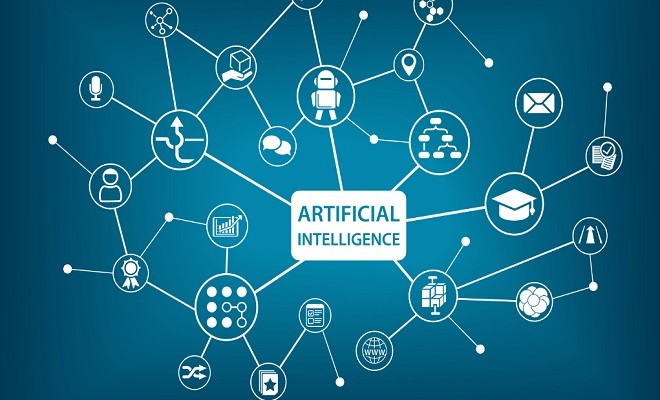Data and analytics leaders are advised to examine the potential business impact of these trends and adjust business models and operations accordingly.

Leading research and advisory company Gartner, Inc. has identified top 10 data and analytics technology trends for 2019.
Augmented analytics, continuous intelligence and explainable artificial intelligence (AI) are among the top trends in data and analytics technology that have significant disruptive potential over the next three to five years, according to Gartner.
Speaking at the Gartner Data & Analytics Summit in Sydney, Rita Sallam, research vice president at Gartner, said data and analytics leaders must examine the potential business impact of these trends and adjust business models and operations accordingly.
“The story of data and analytics keeps evolving, from supporting internal decision making to continuous intelligence, information products and appointing chief data officers,” she said.
“It’s critical to gain a deeper understanding of the technology trends fuelling that evolving story and prioritize them based on business value,” she added.
Gartner recommends that data and analytics leaders should discuss with senior business leaders about their critical business priorities and explore how the following top trends can enable them.
Trend No. 1: Augmented Analytics
Augmented analytics uses machine learning (ML) and AI techniques to transform how analytics content is developed, consumed and shared. By 2020, augmented analytics is expected be a dominant driver of new purchases of analytics and BI, as well as data science and machine learning platforms, and of embedded analytics.
Trend No. 2: Augmented Data Management
Augmented data management converts metadata from being used for audit, lineage and reporting only, to powering dynamic systems. Metadata is changing from passive to active and is becoming the primary driver for all AI/ML.
Augmented data management leverages machine learning capabilities and AI engines to make enterprise information management categories including data quality, metadata management, master data management, data integration as well as database management systems (DBMSs) self-configuring and self-tuning. It is automating many of the manual tasks and allows less technically skilled users to be more autonomous using data. It also allows highly skilled technical resources to focus on higher value tasks.
By the end of 2022, data management manual tasks is estimated to be reduced by 45 per cent through the addition of ML and automated service-level management.
Trend No. 3: Continuous Intelligence
By 2022, more than half of major new business systems will incorporate continuous intelligence that uses real-time context data to improve decisions, according to Gartner.
Continuous intelligence is a design pattern in which real-time analytics are integrated within a business operation, processing current and historical data to prescribe actions in response to events. It provides decision automation or decision support. Continuous intelligence leverages multiple technologies such as augmented analytics, event stream processing, optimization, business rule management and ML.
“Continuous intelligence represents a major change in the job of the data and analytics team. It’s a grand challenge — and a grand opportunity — for analytics and BI (business intelligence) teams to help businesses make smarter real-time decisions in 2019. It could be seen as the ultimate in operational BI,” said Sallam.
Trend No. 4: Explainable AI
Most of the advanced AI models are complex black boxes that are not able to explain why they reached a specific recommendation or a decision. Explainable AI in data science and ML platforms auto-generates an explanation of models in terms of accuracy, attributes, model statistics and features in natural language.
Trend No. 5: Graph
Graph analytics is a set of analytic techniques that allows for the exploration of relationships between entities of interest such as organizations, people and transactions.
The application of graph processing and graph DBMSs is projected to grow at 100 per cent annually through 2022 to continuously accelerate data preparation and enable more complex and adaptive data science.
Graph analytics will grow in the next few years due to the need to ask complex questions across complex data, which is not always practical or even possible at scale using SQL queries, said Gartner.
Trend No. 6: Data Fabric
Data fabric enables frictionless access and sharing of data in a distributed data environment. It enables a single and consistent data management framework, which allows seamless data access and processing by design across otherwise siloed storage.
Gartner predicted that through 2022, bespoke data fabric designs will be deployed primarily as a static infrastructure, forcing organizations into a new wave of cost to completely re-design for more dynamic data mesh approaches.
Trend No. 7: NLP/ Conversational Analytics
By 2020, 50 per cent of analytical queries will be generated via search, natural language processing (NLP) or voice, or will be automatically generated, according to the research firm.
The need to analyse complex combinations of data and to make analytics accessible to everyone in the organization will drive broader adoption, allowing analytics tools to be as easy as a search interface or a conversation with a virtual assistant, it noted.
Trend No. 8: Commercial AI and Machine Learning
By 2022, 75 per cent of new end-user solutions leveraging AI and ML techniques will be built with commercial solutions rather than open source platforms, Gartner has predicted.
Commercial vendors have now built connectors into the Open Source ecosystem and they provide the enterprise features necessary to scale and democratize AI and ML such as project & model management, reuse, transparency, data lineage, and platform cohesiveness and integration that Open Source technologies lack.
Trend No. 9: Blockchain
As per Gartner, it will be several years before four or five major blockchain technologies become dominant. Until that happens, it said, technology end users will be forced to integrate with the blockchain technologies and standards dictated by their dominant customers or networks.
This includes integration with your existing data and analytics infrastructure. The costs of integration may outweigh any potential benefit. Blockchains are a data source, not a database, and will not replace existing data management technologies, it noted.
Trend No. 10: Persistent Memory Servers
New persistent-memory technologies may help reduce costs and complexity of adopting in-memory computing (IMC)-enabled architectures.
Persistent memory represents a new memory tier between DRAM and NAND flash memory that can provide cost-effective mass memory for high-performance workloads. It has the potential to improve application performance, availability, boot times, clustering methods and security practices, while keeping costs under control. It will also help organizations reduce the complexity of their application and data architectures by decreasing the need for data duplication.










